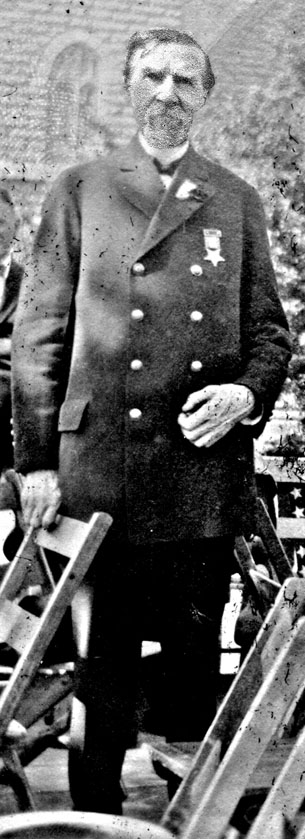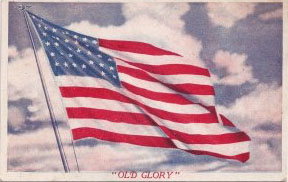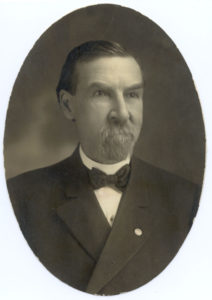Last month I had the pleasure to connect with a Cook cousin. She had recently returned from a road trip that included a stop in Alexandria, Madison Co., Indiana, and a search for information about Samuel A. Cook, and the Alexandria Paper Company. She discovered that the information they had on file about the company, had been submitted by my mother. Not encouraging. As Alexandria is approximately a seven hour drive from my home, I set out to see what I could learn in my favorite way, in my chair. As this search will be chair driven, and not visit driven information, it is not a complete history, but an overview, and an enticement for more information. And another rabbit hole. The Cook family may not be top of mind for the city of Alexandria today in 2016, but in those early decades of the 20th Century they played a vital role in the development of this community, and had a lasting impact on their lives.
I have decided that I would like to tell this story in a series of vignettes, and as we are now just nine days from celebrating Flag Day here in the United States, I would like to share this story.
The United States officially entered World War I on April 6, 1917, and communities across the country held flag raising ceremonies to “show their patriotism and allegiance to the stars and stripes.” [1] A flag raising was held at the Children’s Home in Alexandria on April 16, 1917, and is documented here, along with an image of the event.
Samuel A. Cook, owner and president of the Alexandria Paper Company, Civil War veteran, 1915 State Commander of the G. A. R. for Wisconsin, ex-congressman; was born in 1849 in Ontario, Canada, and became a citizen of his chosen country January 10, 1891. His love of county was great, and in the wake of the unrest surrounding the United States entry into World War I, he decided to hold a Flag Raising ceremony at the factory. The date was set for April 17th at 3:00 p.m. The program was carefully planned, and the Alexandria Business Men’s Association requested that all downtown businesses close from 2:30 till 4:00 p.m., so that as many as possible would be able to attend the ceremony. The program prepared for the event would include and address by S. A. Cook. [2]
The next day dawned “a faultless Indiana spring day, with a sun that shed his refulgent beams unstintingly and graciously over the land and a balmy breeze blowing.” Over 3000 people gathered to join in a “jubilee of patriotism” for “one country, one government, one president, ONE FLAG.” All of Alexandria’s schools had been dismissed for the afternoon so that the students could attend, and the mood was patriotic and cheerful, a local band set the tone as the crowds gathered.

To start the ceremony, an eloquent invocation was given by Rev. Dunn, a man whose “stentorian voice penetrated the most remote edges of the assemblage so that all could hear.” The invocation was followed by the crowd joining in singing “America” which “helped stir the emotions” and set the stage for S. A., who is reported to have been “in an amiable frame of mind,” entering “heartily into the spirit of the occasion.” His voice was “strong enough to be heard by all and he received the closest attention, even the young boys and girls…were still while the speaker appealed to them in the name of our great country to remember its traditions.”
“Mr. Cook’s address was not a set speech, but every word of it was the silver and gold of pure patriotism.” S. A. was a great orator, a great lover of words, and who had an eloquent command of the english language. His goal this day was to inspire the community to stand united with the United States, reminding them that “we cannot be citizens of two countries at one and the same time. We cannot serve two national masters. You must say, ‘this is my country, my flag, and none other will I recognize.’ Divided allegiance would bring ruin to the strongest government on earth and no country could long exist as an independent nation whose people were not united under one flag.”
At the conclusion of his address, which included “humorous allusions,” and “witty remarks,” the crowd accompanied by the band, joined in singing the “Star Spangled Banner.” As the crowd sang, the flag was “hoisted” by the chief engineer of the plant, and as it was raised, a thirteen gun salute was fired. The closing benediction was delivered by Rev. Roadarmel, in a “clear resonant voice.” The mayor then led the crowd in three cheers for the flag now waving proudly over the paper mill, and the ceremony was over. [3]
To commemorate the event, a “moving picture ‘shootist’ snapped every detail of the patriotic meeting. Mr. Cook is shown in the picture delivering a patriotic address at the mill.” The movie was then shared with the people of Alexandria at the New Gossard theatre, on April 24, 1917. Sam Oh to find this piece of film. That would be amazing.
The April 18, 1917 Times-Tribune article begins with what they state is the “climax and peroration: of S. A.’s address, a tribute to our flag, and it is with this tribute, I will end my post.
“Old Glory is the emblem of peace and purity, protecting all our citizens in their religious beliefs, political affiliations and legitimate industries. Men and women, guard it in the fulness of meaning. It is not a painted rug, it is the constitution, it is the government. Forget not what it means and be true to our country’s Flag. Let us twine each thread of our country about our heart strings and catch the spirit that breathes upon us from the battlements of our fathers. Let us resolve, come weal or woe, that we will in life, now and forever, stand by the Stars and Stripes. They have been unfurled from the snows of Canada to the Gulf of Mexico, in the halls of Congress and in the solitude of every sea as the symbol of resistless power. It has led the wave to victory and glory. It has floated over our cradles. Let it be our prayer and our struggle that it may float over our graves. May God bless you all and your every earnest effort.”
SOURCES:
- “Old Glory Will Float Tomorrow,” The Times=Tribune, 19 May 1917, p. front page, col. 7; digital images, Newspapers.com (www.newspapers.com : accessed 18 May 2016).
- “Flag Raising at the Paper Mill,” The Times=Tribune, 16 Apr 1917, p. front page, col. 2; digital images, Newspapers.com (www.newspapers.com : accessed 18 May 2016).
- “Raising of Flag is a Success,” The Times=Tribune, 18 Apr 1917, p. front page, col. 1-2; digital images, Newspapers.com (www.newspapers.com : accessed 5 Jun 2016).
- “Head of Paper Co. Seen in the Movies,” The Times=Tribune, 24 Apr 1917, p. frontage, col. 6; digital images, Newspapers.com (www.newspapers.com : accessed 19 May 2016).


